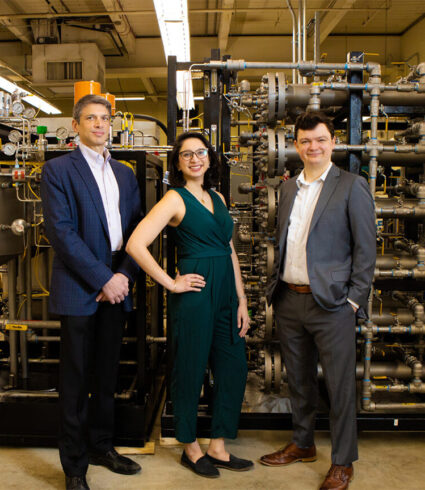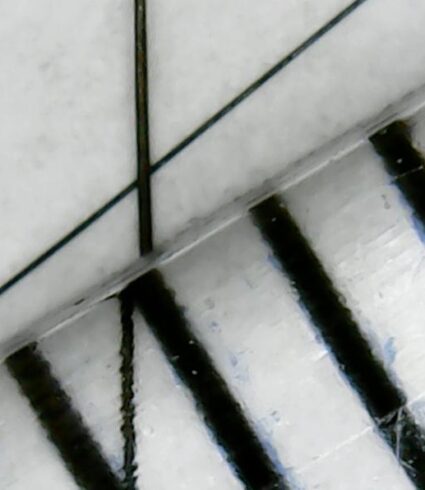Energy and the Environment

Semiconductors
New semi-conducting materials for building more efficient solar cellsSynthesis and Processing
Emissions-free cement and building materials made from industrial wasteSynthesis and Processing
Grid-powering batteries that can store renewable energyNew semi-conducting materials for building more efficient solar cells
Emissions-free cement and building materials made from industrial waste
Grid-powering batteries that can store renewable energy
Building a Greener World
Many of the grand climate and sustainability challenges are deeply dependent on materials—and DMSE researchers are committed to facing such challenges with groundbreaking research. New grid-scale batteries developed in DMSE, for example, can store solar or wind energy when it’s cloudy and there’s not a breeze in the air. And a newly discovered family of semiconductors could make solar cells more efficient. DMSE researchers are also working on cleaning up the production of cement—one of the world’s major sources of greenhouse gas emissions—and turning the industrial waste generated in manufacturing into materials that can be used to construct new buildings.
DMSE researchers have developed a way to produce cement that could eliminate greenhouse gas emissions.
Sustainable Materials Innovation
DMSE researchers are tackling climate change using the tools of their trade. They’re using metals and ceramics to build better, safer battery systems and fuel cells. They’re tapping other materials such as graphene, a semi-metal, for water filtration and chemical separation. And they’re using semiconductors for power conversion and transmitting power to the grid.
There’s more than one way to do sustainability research. DMSE researchers look to computation and design to develop analytical models for studying the environmental impact of materials, synthesis and processing for new materials used energy storage, and device fabrication for more eco-friendly microchips.
Related Materials and Research Types
Impact Stories
Related Faculty and Researchers
Key Publications
First-order amorphous-to-amorphous phase transitions during lithiation of silicon thin films
Studied the phase transitions that occur when lithium ions are introduced into silicon thin films (such “lithiation” controls the performance of silicon-based energy storage materials).
3D printed structures for modeling the Young’s modulus of bamboo parenchyma
Devised an alternative approach to test the mechanical properties of the various tissues in bamboo. The new method involves enlarging the tissues’ microstructure into 3-D printed models so tests can be conducted more effectively.
Reactivation of chromia poisoned oxygen exchange kinetics in mixed conducting solid oxide fuel cell electrodes by serial infiltration of lithia
Extended the commercial viability of fuel cells and improved original performance despite long-term degradation of the metal oxide components. We recovered poisoned metal oxide surfaces by systematically controlling their acidity.





























